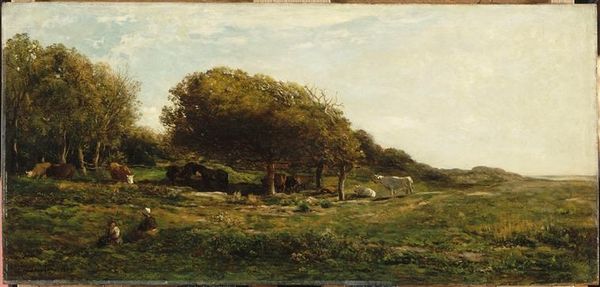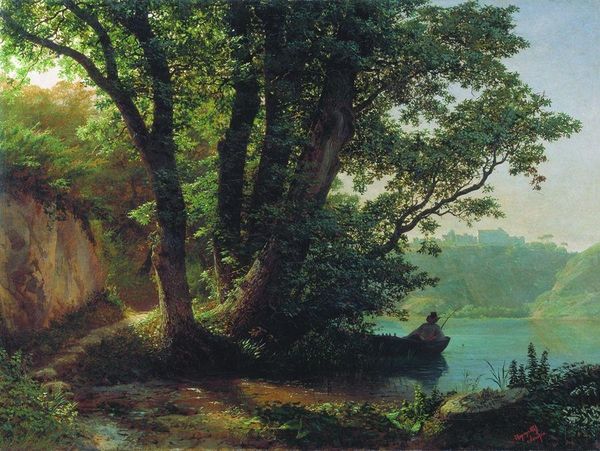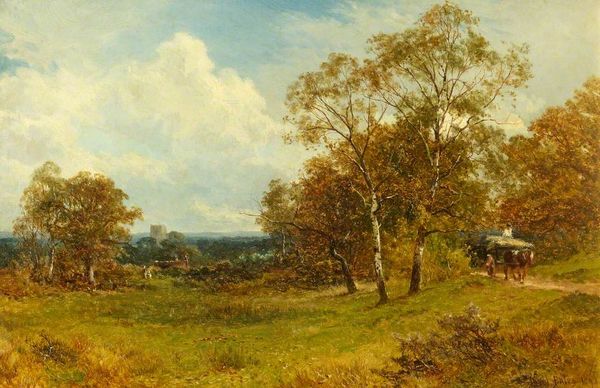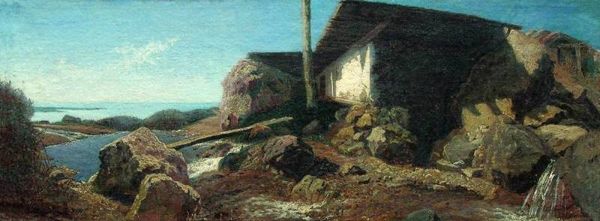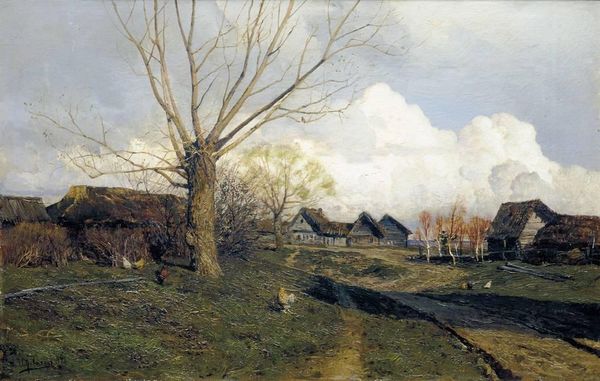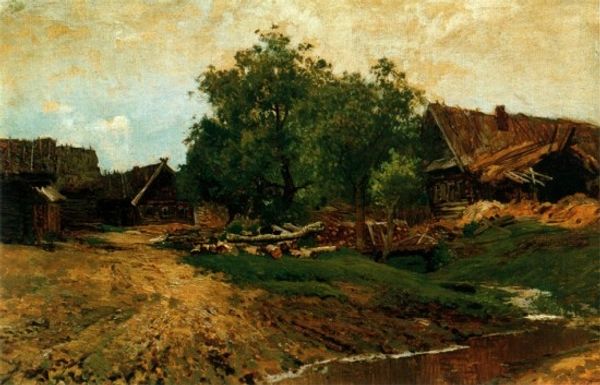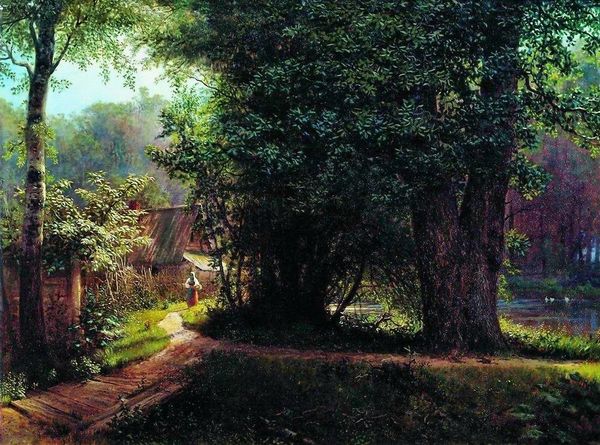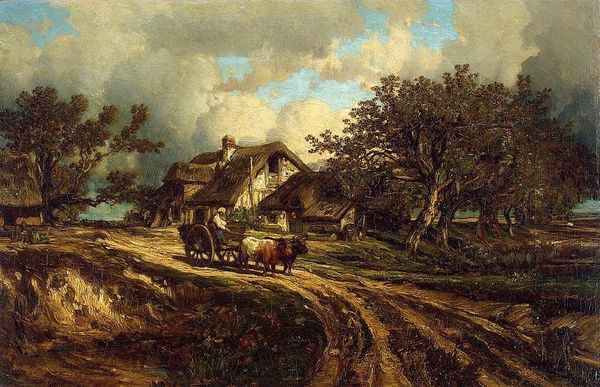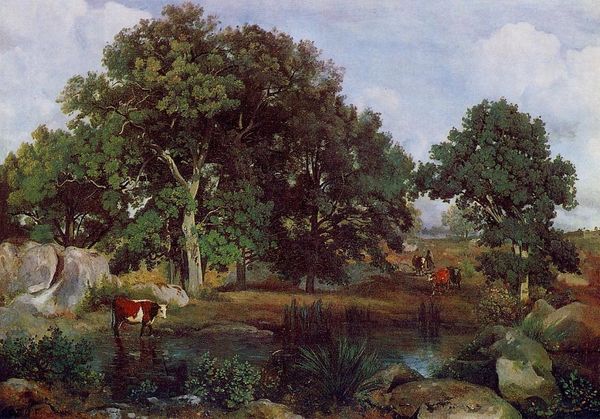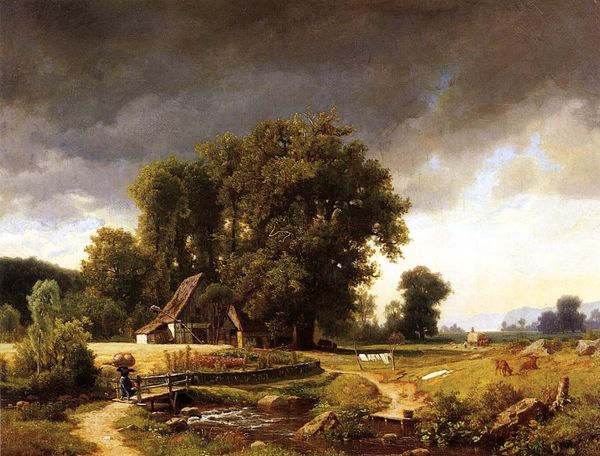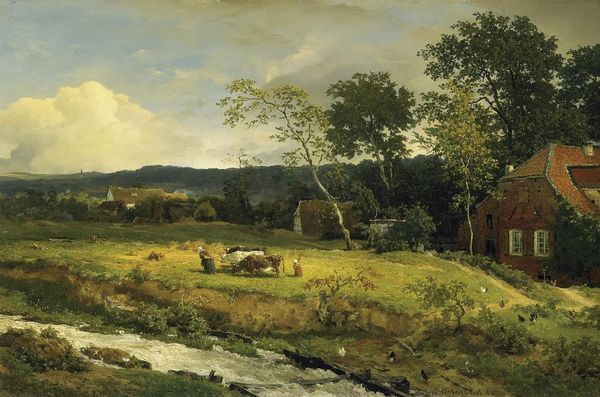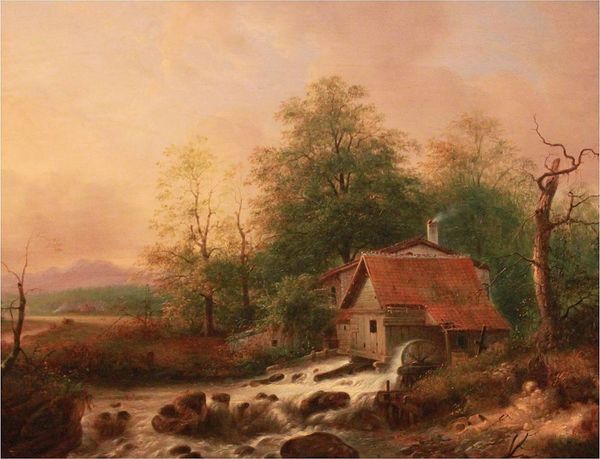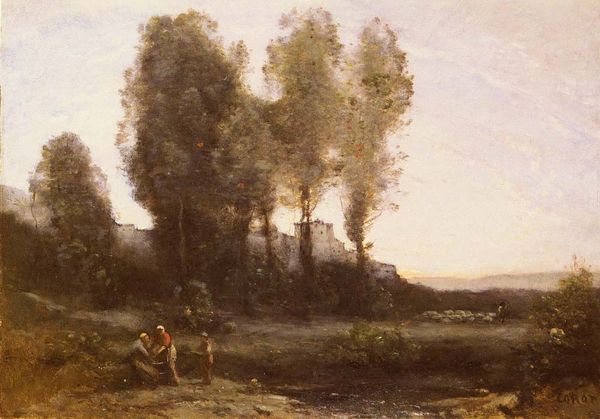
Copyright: Public domain
Curator: Before us is Volodymyr Orlovsky’s “Landscape near Alushta,” an oil painting dating back to 1870. Editor: It’s strikingly peaceful, wouldn't you say? The colours are so muted; it almost feels like looking at a faded photograph, with this calm mood from the landscape blending naturally. Curator: Indeed, and it speaks volumes about the societal role landscapes played in reflecting the period’s sense of nationalism and identity, especially within the context of Imperial Russia’s expansion. Look closely at how it seems to romanticise the connection between people and the land; there’s an almost spiritual resonance. The working class had a deeply close knit existence within that natural environment at the time. Editor: It also feels very constructed. Oil paints afforded him that almost believable look. The artist pays such attention to rendering texture: the rocks, foliage and that small stream; look how the labor of the artist shows that this a particular landscape which isn’t mass produced. What do we know of Alushta itself? Curator: Alushta was a significant port city in Crimea and a popular resort, reflecting a larger socio-economic dynamic—the growing accessibility of leisure for the burgeoning middle class, the social structures in place during the landscape production would determine whether someone could experience it directly. Orlovsky capitalised on that through his renderings. It's worth considering that leisure time isn’t accessible to all, even now. Editor: The people blend so naturally as well into the land’s colours, but are small against the rest of the landscape: the boulders look significant in their size compared to the family or group near the central building. And the craftsmanship of that building nestled there, partly out of view is a great view in to what was needed at the time to facilitate life itself! Curator: Absolutely; that subtle interaction invites a reflection on labour and its intersectionality, because as we analyse it further, class, gender and ethnicity impact on each landscape depiction. How many works exist from other diverse viewpoints which give us varied impressions and what stories can be told. Editor: Yes, by exploring what these paintings were really illustrating by investigating both technique and culture is such an important path! Curator: The dialogue between the artist, the land, the people, the viewers through painting production: we discover the human connections. Editor: Exactly; it goes beyond brushstrokes and enters the real world of what’s left to remind us!
Comments
No comments
Be the first to comment and join the conversation on the ultimate creative platform.
